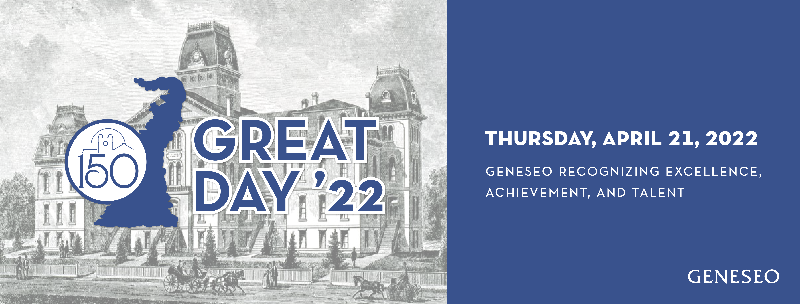
Submission Type
Poster
Start Date
4-21-2022
Abstract
Solitary bees are a vital part of ecosystems due to their role in pollination of crops and native flowering plants. Some solitary bees, mason bees and leafcutter bees, use hollow cavities to rear their brood. Availability of above ground nesting sites is vital to their success. To promote these beneficial bees, people have set out artificial cavities for them to use. Unfortunately, exotic mason bees are outnumbering native mason bees in the eastern United States and may also benefit from these supplemental nest sites. In Spring 2020 boxes of hollow tubes for cavity-nesting bees were established at locations across SUNY Geneseo to support native bees and survey bee diversity. When tubes were dissected in spring 2021 and adult bees were allowed to emerge, we discovered many to be exotic. The increasing abundance of exotic mason bees is likely depressing native mason bee populations. Could artificial nesting sites be set out in a way that supports native bee species without supporting exotics? As we know exotic mason bees emerge very early in the spring, we compared occupation of artificial nest tubes set out later in spring 2021 to those set out earlier in spring 2020. Repeated bee bowl surveys were also conducted in the spring and summer to determine timing of exotic bee activity. We also determined relative abundance of the two exotic mason bee species. These results suggested that artificial nest tubes should be set out later in the spring to avoid supporting exotic mason bees.
Recommended Citation
Hoare, Stephen; Williams, Rachel; and Latorre, Kaitlyn, "163 -- Timing of Use of Artificial Nests by Exotic Mason Bees" (2022). GREAT Day Posters. 56.
https://knightscholar.geneseo.edu/great-day-symposium/great-day-2022/posters-2022/56
163 -- Timing of Use of Artificial Nests by Exotic Mason Bees
Solitary bees are a vital part of ecosystems due to their role in pollination of crops and native flowering plants. Some solitary bees, mason bees and leafcutter bees, use hollow cavities to rear their brood. Availability of above ground nesting sites is vital to their success. To promote these beneficial bees, people have set out artificial cavities for them to use. Unfortunately, exotic mason bees are outnumbering native mason bees in the eastern United States and may also benefit from these supplemental nest sites. In Spring 2020 boxes of hollow tubes for cavity-nesting bees were established at locations across SUNY Geneseo to support native bees and survey bee diversity. When tubes were dissected in spring 2021 and adult bees were allowed to emerge, we discovered many to be exotic. The increasing abundance of exotic mason bees is likely depressing native mason bee populations. Could artificial nesting sites be set out in a way that supports native bee species without supporting exotics? As we know exotic mason bees emerge very early in the spring, we compared occupation of artificial nest tubes set out later in spring 2021 to those set out earlier in spring 2020. Repeated bee bowl surveys were also conducted in the spring and summer to determine timing of exotic bee activity. We also determined relative abundance of the two exotic mason bee species. These results suggested that artificial nest tubes should be set out later in the spring to avoid supporting exotic mason bees.


Comments
Sponsored by Jennifer Apple